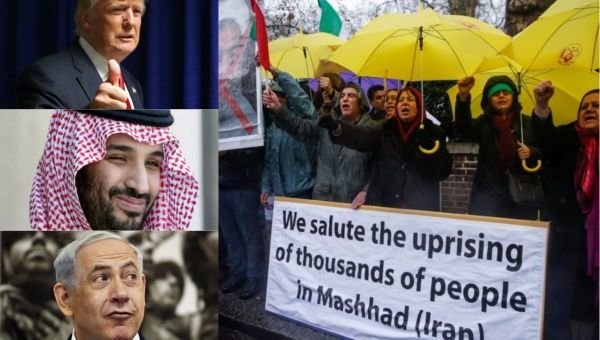U.S. invests in creating unrests in Iran to its geopolitical interests: Geopolitical expert

TEHRAN - Commenting on recent turbulences in Iran Anthony Cartalucci says the U.S. still believes investing in the protests can create some sort of positive geopolitical return for their policy of undermining and coercing Iran domestically, regionally and internationally.
Following some unrests in Iran early January, the U.S. President Donald Trump pledged "great support" for protesters and raised the issue in the UN Security Council.
To shed more light on the real reasons behind the turbulences and the U.S. real motive behind Trump’s interfering acts, we discussed the issue with Bangkok- based geopolitical researcher Anthony Cartalucci.
Q: What is the relation between failure of the U.S. regional policy in the Middle East due to Iran's resistance and regional influence and the recent unrests in some of Iran's cities?
A: Washington's Middle East policy has always focused on asserting U.S. hegemony across the region which by necessity requires the toppling of the current Iranian political order and replacing it with one that answers to U.S. special interests. Attempts to overthrow the government of Syria and undermine the strength of Hezbollah in Lebanon are admitted U.S. foreign policy objectives deemed as prerequisites before moving on to destabilize and topple the Iranian government.
The U.S.-fueled unrest in Iran looks to have been launched in desperation. Ideally the U.S. would have wanted to deplete Iranian resources in Yemen, Syria, and in regards to Hezbollah first, before moving on to create sustainable destabilization in Iran itself. The protests have been extensively planned for years, with the U.S. investing money and resources in opposition groups and armed militants both within and along Iran's borders, yet despite these extensive preparations, it appears that the planned "uprising" was a flash in the pan.
Q: What is the real goal behind Trump and the U.S. congress support to protesters in Iran?
A: Many of the protests in Iran appeared to support U.S.-backed terrorist organizations like Mojahedin-e Khalq (MEK) and U.S.-based Iranian exile Reza Pahlavi. Militant groups that took advantage of the unrest including certain Kurdish groups along the Iran-Iraq border and Baluchi terrorists along the Iran-Afghanistan and Iran-Pakistan borders are also long-time recipients of U.S. arms, cash, and political support. U.S. President Trump and the U.S. Congress supporting an uprising of its own creation fits the same pattern of destabilization wielded across the region against Libya, Syria, Yemen, Egypt and Iraq.
The primary goal is to overthrow the current Iranian political order. U.S. policy papers admit that - failing to overthrow the Iranian government outright – U.S.-fueled unrest could be used at the very least as a means of coercing Tehran in making concessions to Washington. However unlikely the protests may seem in terms of overthrowing the Iranian government or creating the same sort of violence and chaos currently ravaging Syria, the U.S. still believes investing in the protests can create some sort of positive geopolitical return for their policy of undermining and coercing Iran domestically, regionally, and internationally.
Q: U.S. took the issue to UN Security Council. To what extent this is in line with the UNSC responsibility asserted in the charter of the UN? What was the results of the move for U.S.?
A: It was no surprise that the U.S. brought the issue to the UN Security Council. The UN charter specifically prohibits interfering in the internal affairs of other nations. Thus, the U.S. has created upheaval within Iran, used its extensive influence across the media to depict the chaos as stemming from Tehran, not Washington, and then attempts to create a pretext for foreign intervention through the notion of "responsibility to protect." This is the same strained pretext the U.S. used to intervene in Libya and Syria on behalf of terrorists it had initially funded, armed, and unleashed during the 2011 "Arab Spring" then appealed to the UN amid the resulting violence to permit foreign intervention.
The U.S. has overused both the method of fueling unrest within targeted nations as well as its attempts to then leverage unrest of its own creation as a pretext for intervention. As the list of nations targeted and destroyed by these tactics grow, nations that remain may increasingly feel they will be "next" and less eager to back the US both within the halls of the UN General Assembly, upon the UNSC, and upon the stage of international politics in general. U.S. Ambassador to the UN Nikki Haley's comments before the UN were particularly detached from reason and reality, a manifestation of just how overused these tactics have become for the U.S. and how transparent they've become for the rest of the international community.
Leave a Comment